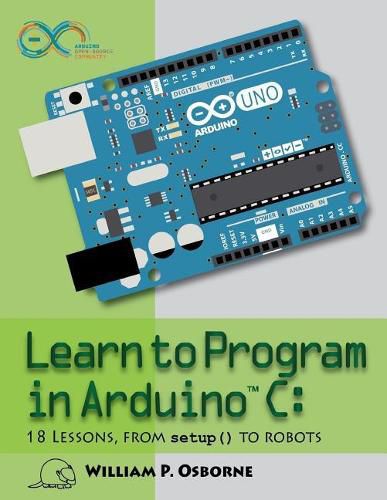Readings Newsletter
Become a Readings Member to make your shopping experience even easier.
Sign in or sign up for free!
You’re not far away from qualifying for FREE standard shipping within Australia
You’ve qualified for FREE standard shipping within Australia
The cart is loading…






The lessons in this book offer an accessible STEM curriculum. Classes based on it are currently taught in a growing number of high school classrooms. Students and teachers alike are supported on the companion website, www.LearnCSE.com. Aided by more than 250 color photos, illustrations, and diagrams, the lessons and exercises in the book teach how to program and use the Arduino singleboard computer. In the process, the reader learns: How to program in C, the language underlying the most commonly used programming languages; How to identify and use common electronic components and sensors; How to perform electronics-specific tasks, such as creating a circuit board; How to construct, program, communicate with, and control robotic devices, including servos, LEDs, DC motors, infrared communicators, push buttons, potentiometers, NeoPixels, and H-bridges. Sample code provides starting points in each of the lessons. Through all of this, the reader is connected to career paths where these skills are in high demand. Best of all, the reader gets excited about learning how to program. LearnCSE’s methods are designed for hands-on learners; they stimulate creativity as well as problem solving and critical thinking.
$9.00 standard shipping within Australia
FREE standard shipping within Australia for orders over $100.00
Express & International shipping calculated at checkout
The lessons in this book offer an accessible STEM curriculum. Classes based on it are currently taught in a growing number of high school classrooms. Students and teachers alike are supported on the companion website, www.LearnCSE.com. Aided by more than 250 color photos, illustrations, and diagrams, the lessons and exercises in the book teach how to program and use the Arduino singleboard computer. In the process, the reader learns: How to program in C, the language underlying the most commonly used programming languages; How to identify and use common electronic components and sensors; How to perform electronics-specific tasks, such as creating a circuit board; How to construct, program, communicate with, and control robotic devices, including servos, LEDs, DC motors, infrared communicators, push buttons, potentiometers, NeoPixels, and H-bridges. Sample code provides starting points in each of the lessons. Through all of this, the reader is connected to career paths where these skills are in high demand. Best of all, the reader gets excited about learning how to program. LearnCSE’s methods are designed for hands-on learners; they stimulate creativity as well as problem solving and critical thinking.